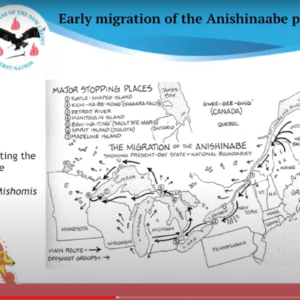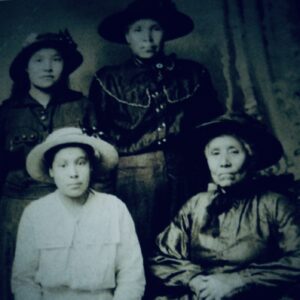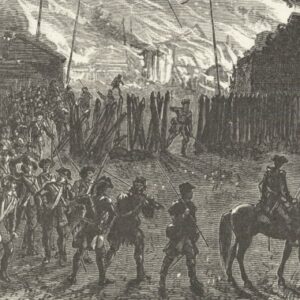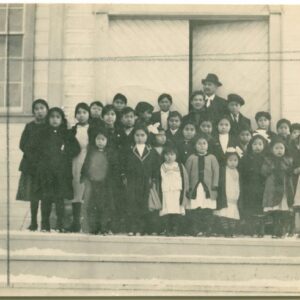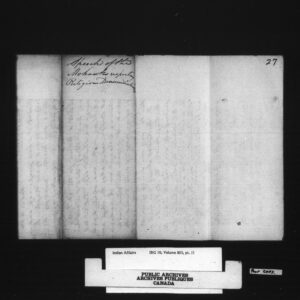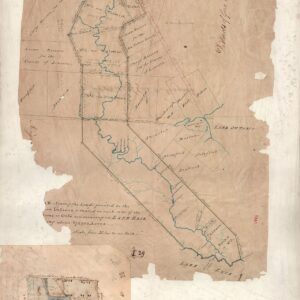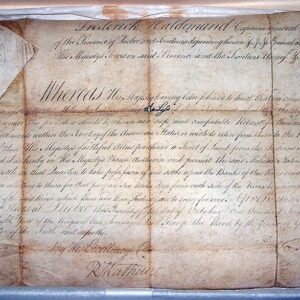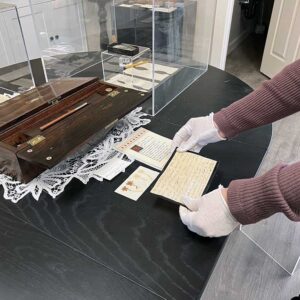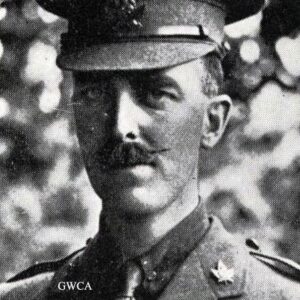
SIX NATIONS — Imagine poking around the internet and discovering you are a direct descendent of the founder of one of North America’s first Native activists organizations of the 20th century. Frederick Ogilvie Loft was the creator of an alliance of Indian (Onkwehonwe) Nations from across the country, known as the League of Indians, which eventually morphed into the Assembly of First Nations of today.
These are the revelations Six Nations born Ironworker, Rope Loft, discovered while looking up another relative on-line, five years ago and it still has him floored.
Great-Great-Granddad Loft, and Ojibwa soldier Francis Pegahmagabow, most highly decorated Indigenous soldier in Canadian military history of World War I, used their positions to seek equal rights for “Indians Allies” who were serving in the military at the time. He is also one of the first reporters to alerted the world about the residential schools problems of abuse as early as the 1890’s.
According to author John L. Taylor, “F.O. Loft was undoubtedly a man born before his time. His resources were insufficient to sustain and enlarge the organization he envisaged. He was nearly sixty when he began and he had to maintain full-time employment to support his family. In any case, one person could not have done all that was required.”
As it turns out, Rope’s great-great-grandfather was Lieutenant Frederick Ogilvie Loft, who served in the Canadian forces during WWI in the Forestry Service, an extremely important service in Europe when war broke out on the Western Front. Shipping of raw building materials and tools for the war effort was being curtailed by the German navy’s sinking of supply ships bound for Britain and the front.
Rope has only recently rediscovered his roots and after reading dozens of newspaper clippings from the early 1900’s and as many books as he could find about his famous relative, he expresses the pride he now feels in being in the lineage of one of the first political organizers for Native Rights across Canada.
When the war in Europe broke out, the call went out from Britain and France and their colonies for experienced forestry workers to fell trees, saw-millers to mill the lumber to erect field hospitals, clear paths for troop movement, airfields, line the hundreds of miles of underground trenches and tunnels for troop movement and sappers. Sappers were explosives experts but the worked closely with the tunnel builders, consisting of recruited miners and lumbermen.
Sappers would dig miles long tunnels under the front lines of the German trenches, fill them with explosives and at a strategic time, detonate enormous explosions, lifting millions of tons of earth several feet into the air, killing hundreds of soldiers at a time and destroying forward machine gun and artillery positions.
The allies were not the only ones employing this subsurface warfare. The Germans were good at it as well. In fact there are some remaining reports and documents that told of Allide sappers actually hearing their German counterparts digging their own tunnels towards the British lines, only feet away.
Lieutenant Loft was well educated, spoke fluent Mohawk and English and was a born leader, generally an impressive figure at 6’, at a time when the average hight for a man was 5’6”.
The Canadian Forestry Corps was created on Nov.14th, 1916 and quickly became known under the nick-name, the “Sawdust Fusiliers”, by the troops. The Canadian Forestry Corps badge consists of a circle, with a beaver on top, superimposed on a pair of crossed axes, with the text “Canadian Forestry Corps” around the edge. At the centre of the circle is a maple leaf with the Imperial State Crown.
The contribution Loft and these unsung heroes of the Great War made to the war effort can not be overstated, but was especially valuable during the trench standoffs in France and Belgium.
It was estimated by military planners at the time that every soldier needed five trees: one for living quarters, cooking and recreation; one for crates to ship food, ammunition, tanks, and so on; and three for explosives, gun stocks, coffins, ships, factories, in support of the fighting on the front line.
The stretch of deep, sticky mud, blood, bodies and body parts littering the no-mans-land between Allied trenches and those of the German army made even walking a step a chore. The trenches had become cess pools of disease and discomfort for months. More died of disease on both sides than were actually killed in battle.
The need for wooden planks and beams was great, to create some kind of flooring to walk on within these horrible trench conditions, as well as for building rudimentary underground barracks and war-rooms to plan strategies from.
It was all supplied by the “Sawdust Fusileers”, and without it, a person could easily be swallowed up in a death pool of mud and squaller, never to be seen again.
Lining the trenches and tunnels required massive amounts of materials as well. Every tree within a reasonable distance of the trenches was used up or reduced to riddled stumps by the incessant storm of lead going in both directions.
One-hundred years after the war, military archaeologists and local relic hunters are still finding tunnels which honey-come almost all of France.
Today, the work of Loft and the other “Sawdust Fusiliers” usually goes unnoticed, but certainly not to the veterans of the “Great War” themselves. They knew all too well that without them, the horrors of the tenches would have been far worse.
Loft did a lot of recruiting work amongst the men of Six Nations and New Credit area, in advance of the war and during it. He also worked for a time as a reporter for the Brantford Expositor and the Toronto Globe and Mail.
His Mohawk name seemed to fit the tall, strong and handsome Frederick Loft well. His given Clan name was Onondeyoh: which means, “Beautiful Mountain.”
Rope Loft has a lot to be proud of. Although records of Indigenous soldiers in WWI are incomplete and were not well recorded, he has made it his mission to find out as much as he can about the life and times of his great-great-grandfather, Lieutenant Frederick Ogilvie Loft, activist and “Sawdust Fusilier.”


